A family of flowers that comes in practically every shade on the planet, the lily is a beautiful, varied plant group that makes for an excellent plant for cutting gardens, container gardens, raised bed and traditional gardens, walkway borders, and so much more. But not everyone really knows when these lovely plants bloom. Is the lily a spring flower? A summer flower? Autumn bloomer?
It should be noted that not everything called a lily is actually a true lily, though (calla lilies and peace lilies, for example, are not true lilies). The planting information below pertains to true lilies, not these “lily adjacent” plants, as we’ll call them.
How Many Types of Lilies Are There?
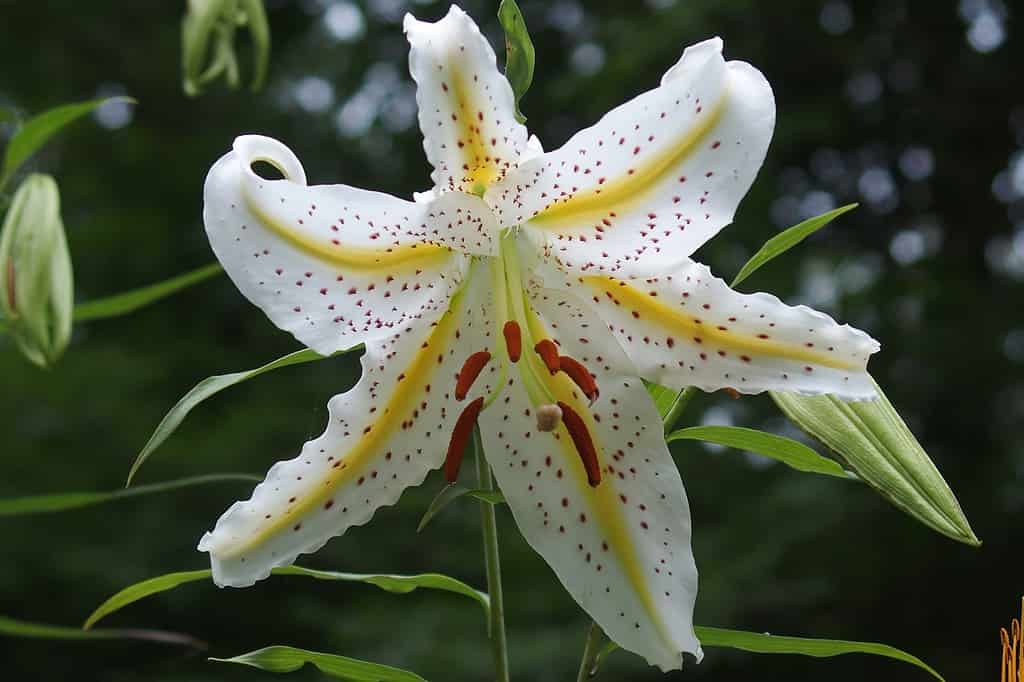
The stunning golden-rayed lily is just one among thousands of lilies.
©kamenokoki/Shutterstock.com
There are literally thousands of lilies in the world to choose from for your garden, plus all the hybrids of those plants. The basic types of lilies include:
- Asiatic lilies
- Trumpet or Aurelian lilies
- Oriental lilies
- Species lilies
- Oriental hybrids
- American hybrids
- Martagon Hybrids
- Longiform hybrids
- Candidum hybrids
- Interdivisional hybrids
- Asiatic hybrids
Typical Blooming Season for Lilies
The majority of lily species are summer bloomers. However, the specific type or hybrid type will determine if they bloom in late spring/early summer, early summer, mid-summer, late summer, or late summer/early autumn.
Blooming Types for Types of Lilies
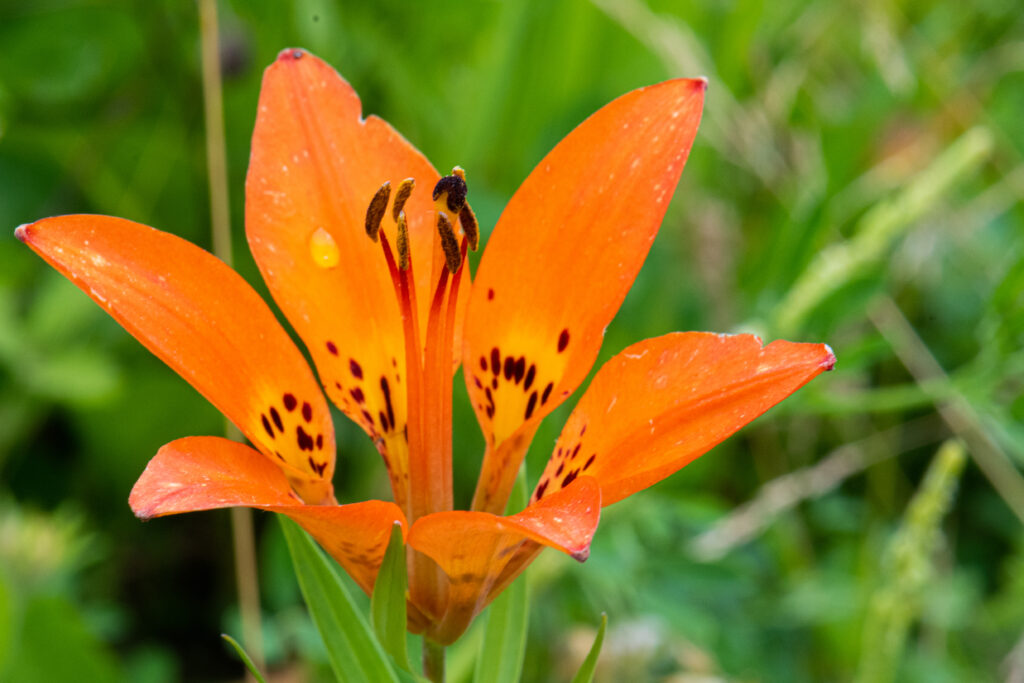
The vibrant wood lily is many colors and blooms in mid to late summer.
©iStock.com/Derwyn
The typical blooming cycle for lilies can help you keep blooms in your garden all summer long, if you plant them accordingly and care for them properly. Typically, Longiform-Asiatic (LA) hybrids will start the season with blooms, with Martagon, Asiatic, Oriental, and Oriental Trumpet (OT) hybrids following, and finally Orientals closing out the season in late summer to early autumn.
- LA hybrids (Longiform-Asiatic hybrids) – early-season lilies
- Martagon lilies – early-season lilies
- Asiatic lilies – early-season lilies
- Double Asiatic lilies – early-season lilies
- Species lilies – early season lilies
- Trumpet lilies – mid-summer lilies
- Oriental-Asiatic hybrids – mid-summer lilies
- OT (Oriental-Trumpet) hybrids – late-season lilies
- Tiger lilies – late-season lilies
- Species lilies – late-season lilies
- Oriental lilies – late-season lilies
- Double Oriental lilies – late-season lilies
How to Keep Lilies Blooming All Summer

The Grand Cru Lily is a stunner for sure! This flower blooms in early summer.
©itasun/Shutterstock.com
Apart from the plan to grow lilies of various kinds that bloom at different points in the season, there are a few other things you may do to keep the lilies healthy and happy and blooming longer.
Plant Lilies as Directed — By Type or Species
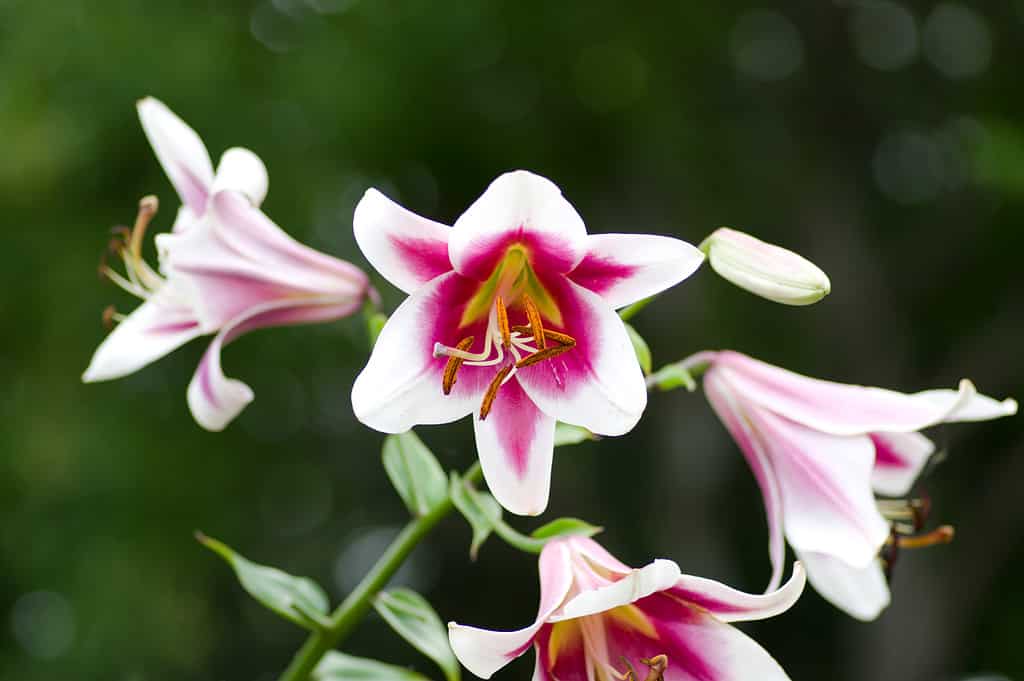
Silk Road lilies bloom in mid to late July.
©zzz555zzz/Shutterstock.com
Not every lily type or species has the same needs. Most lilies thrive in full sun, certainly, but in some climates, too much direct sun can wither the flower. Some species are also shade tolerant and may actually do better in partial shade than in full sun.
They also need to be planted in the right kind of soil, watered properly without over-watering them, and when they are young require some sheltering from harsher elements.
Care for Lilies as Directed — By Type or Species
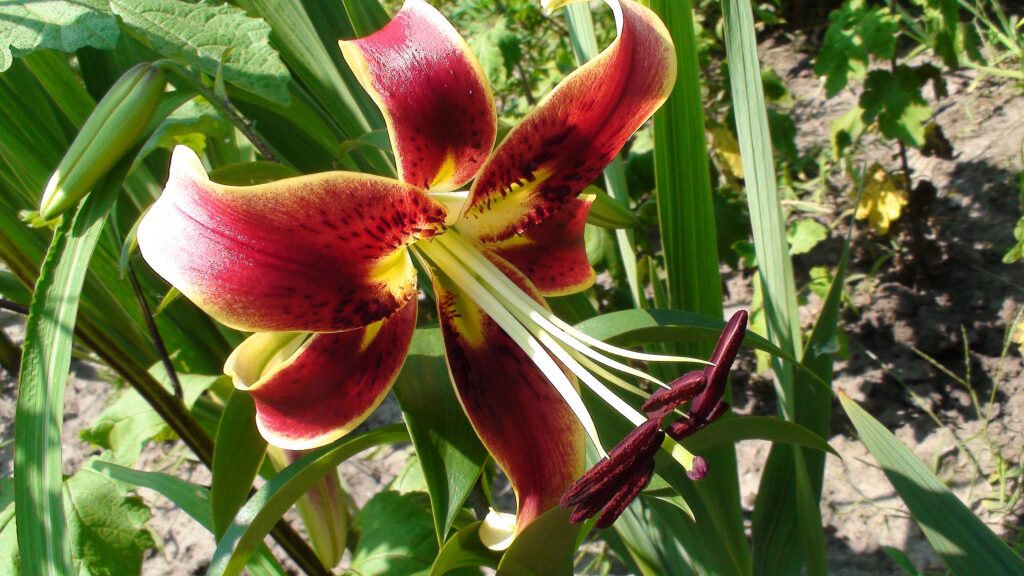
The beautiful Lilium ‘Scheherazade’ blooms in mid to late summer.
©steshs/Shutterstock.com
Additionally, maintaining your lilies according to their particular needs will help keep them thriving all season long and the seasons to come.
Deadheading, for example, is the right choice for most (if not all) lilies species and varieties. They burn up much of their energy at the end of the season producing seeds, so deadheading this year will help them develop healthy blooms next season.
Lilies also need to be watered properly, fertilized on occasion, and sometimes may need pruning. Find information on care for the specific plants you’re growing for best results instead of using a general “lily” guideline.
Protect Lilies Against Pests
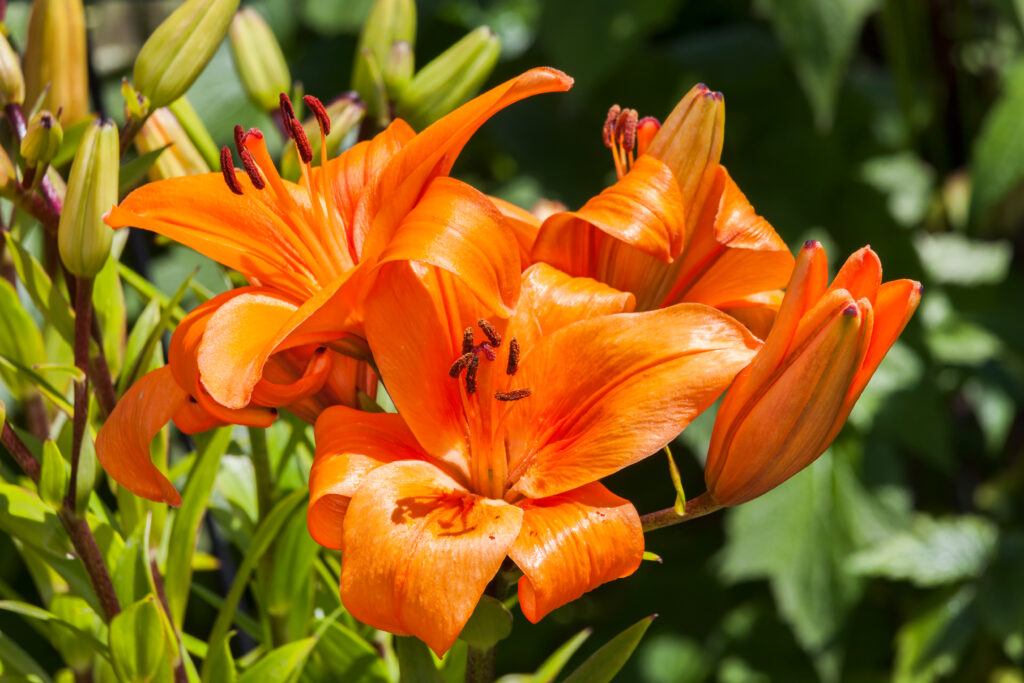
Asiatic lily ‘Enchantment’ is a spring flowering plant that lives up to its name!
©Tony Baggett/Shutterstock.com
Lilies grow from bulbs, which means that they attract not just insects and pollinators, but they draw in animals who like to munch on them, like rabbits, mice, squirrels, and deer. For underground protection, you may be able to use a fine wire mesh basket or a “bulb cage” like those often used for tulips. For above-ground protection, plant other plants nearby that deter these critters from coming close. If the issues continue, you may need to use an animal-safe spray that helps deter them without harming them.
Do Indoor Lilies Bloom at Other Times?
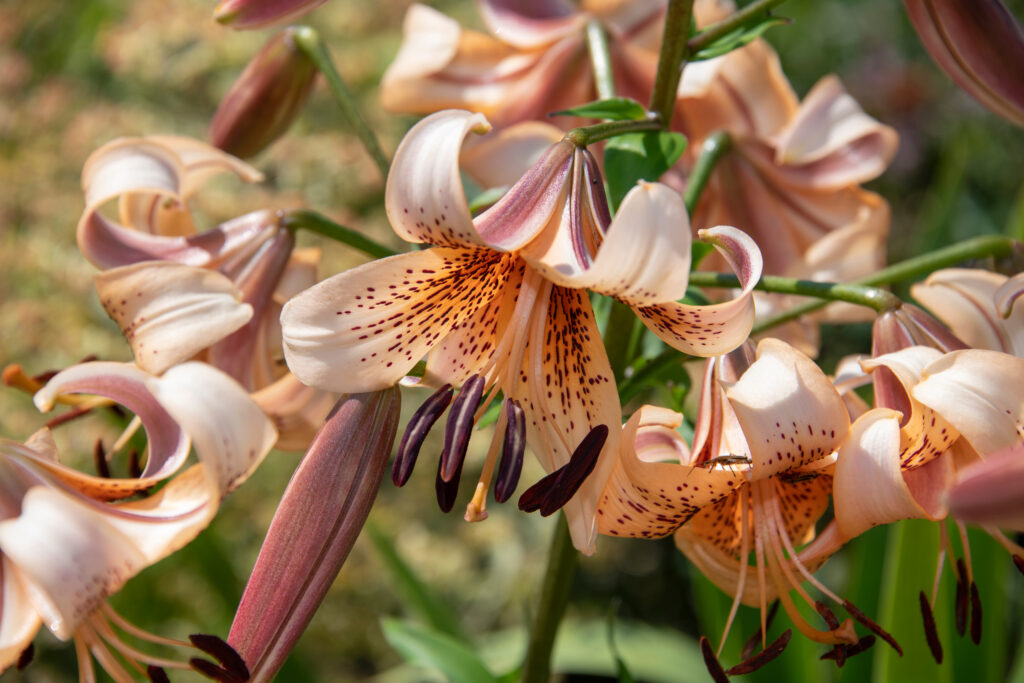
The Tiger Babies flower is a light peach-orange lily with spots around the center of the flowers and blooms in mid-summer.
©Roig61/Shutterstock.com
Lilies will bloom once a year, whether indoors or outdoors. They do require a cold weather dormancy period to thrive. So if you keep them indoors, it’s best to give them some winter exposure for about 8 weeks to keep them healthy. Depending on the cold dormancy timing, the lily may bloom any time but often will maintain the natural schedule of summer blooming, which is recommended.
The photo featured at the top of this post is © iStock.com/Dmitry Potashkin
Thank you for reading! Have some feedback for us? Contact the AZ Animals editorial team.







